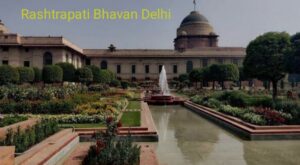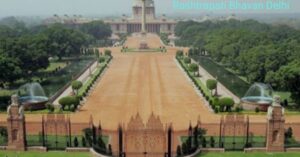Rashtrapati Bhavan Delhi, located in the heart of New Delhi, stands as a symbol of India’s rich history, architectural grandeur, and political significance. As the official residence of the President of India, it has been a witness to countless historical events and continues to play a crucial role in the nation’s governance. This blog delves into the fascinating history, architectural brilliance, and cultural significance of Rashtrapati Bhavan.

1. History of Rashtrapati Bhavan Delhi
The conception of Rashtrapati Bhavan dates back to the early 20th century when British architect Edwin Lutyens was commissioned to design a grand residence for the Viceroy of India. Construction began in 1912 and was completed in 1929, marking it as one of the largest and most magnificent residences ever built. Initially known as the Viceroy’s House, it became Rashtrapati Bhavan after India gained independence in 1947, transitioning from a symbol of colonial power to the home of the Indian President.
2. Rashtrapati Bhavan Delhi : Architectural Marvel
Rashtrapati Bhavan is a masterpiece that blends Indian and European architectural styles. The structure features a massive central dome, flanked by wings that house various offices and residences. The design incorporates elements of Mughal and Indian architecture, evident in the intricate carvings, expansive courtyards, and use of indigenous materials. The Mughal Gardens, an integral part of the estate, showcase a blend of Persian-style layouts and Indian flora, offering a serene retreat that is open to the public annually during Udyan.

3. Inside Rashtrapati Bhavan
The interiors of Rashtrapati Bhavan are equally impressive, with grand halls and state rooms that reflect the opulence of its design. The Durbar Hall, with its 23- meter-high ceiling, serves as the venue for official ceremonies. Ashoka Hall, originally a ballroom, is adorned with exquisite Persian paintings. The Presidential offices and living quarters are adorned with art and artifacts, each telling a story of India’s rich cultural heritage.
4. The Presidential Estate
Spanning 330 acres, the Rashtrapati Bhavan estate is an oasis of greenery and tranquility in the bustling capital. The estate includes the Mughal Gardens, Herbal Garden, Spiritual Garden, and Musical Garden, each offering a unique experience. These gardens not only enhance the beauty of the estate but also play a role in environmental sustainability through organic farming and water conservation practices.
5. Public Access and Tours
Rashtrapati Bhavan opens its doors to the public, offering a glimpse into its grandeur and history. Visitors can book guided tours online, which cover key areas like the main building, museum, and gardens. Special events and open days provide additional opportunities to explore this iconic residence. Educational programs and exhibitions further enrich the visitor experience, making Rashtrapati Bhavan a must-visit for history and architecture enthusiasts.
6. Rashtrapati Bhavan in Modern Times
In contemporary India, Rashtrapati Bhavan continues to be a hub of political activity and national importance. It hosts numerous state functions, including swearing-in ceremonies, diplomatic receptions, and cultural events. The President’s initiatives, such as the In-Residence Program for artists and writers, highlight Rashtrapati Bhavan’s role in promoting cultural and intellectual pursuits.
7. Significance in Indian Culture
Rashtrapati Bhavan is more than just a presidential residence; it is a symbol of India’s democracy and cultural heritage. Its presence in media, literature, and public consciousness underscores its significance as a national icon. For many Indians, Rashtrapati Bhavan embodies the values of democracy, integrity, and progress, instilling a sense of pride and belonging.
Conclusion:
Rashtrapati Bhavan stands as a testament to India’s architectural prowess, historical legacy, and democratic spirit. Its grandeur and significance make it a vital part of the nation’s heritage. Whether you are a history buff, architecture enthusiast, or simply a curious traveler, a visit to Rashtrapati Bhavan offers an enriching experience that connects you to the heart of India’s political and cultural landscape. Explore this magnificent residence and be inspired by its timeless beauty and profound legacy.
FAQ:
1.Can we visit Rashtrapati Bhavan Delhi?
2.Who can stay at Rashtrapati Bhavan?
3.What is Rashtrapati Bhavan famous for?
4.Is it worth to visit Rashtrapati Bhavan?
5.10 lines on Rashtrapati Bhavan
6.Rashtrapati Bhavan rooms
7.Rashtrapati Bhavan inside
8.Rashtrapati Bhavan ticket
9.Who lives in Rashtrapati Bhavan
10.Rashtrapati Bhavan Garden

